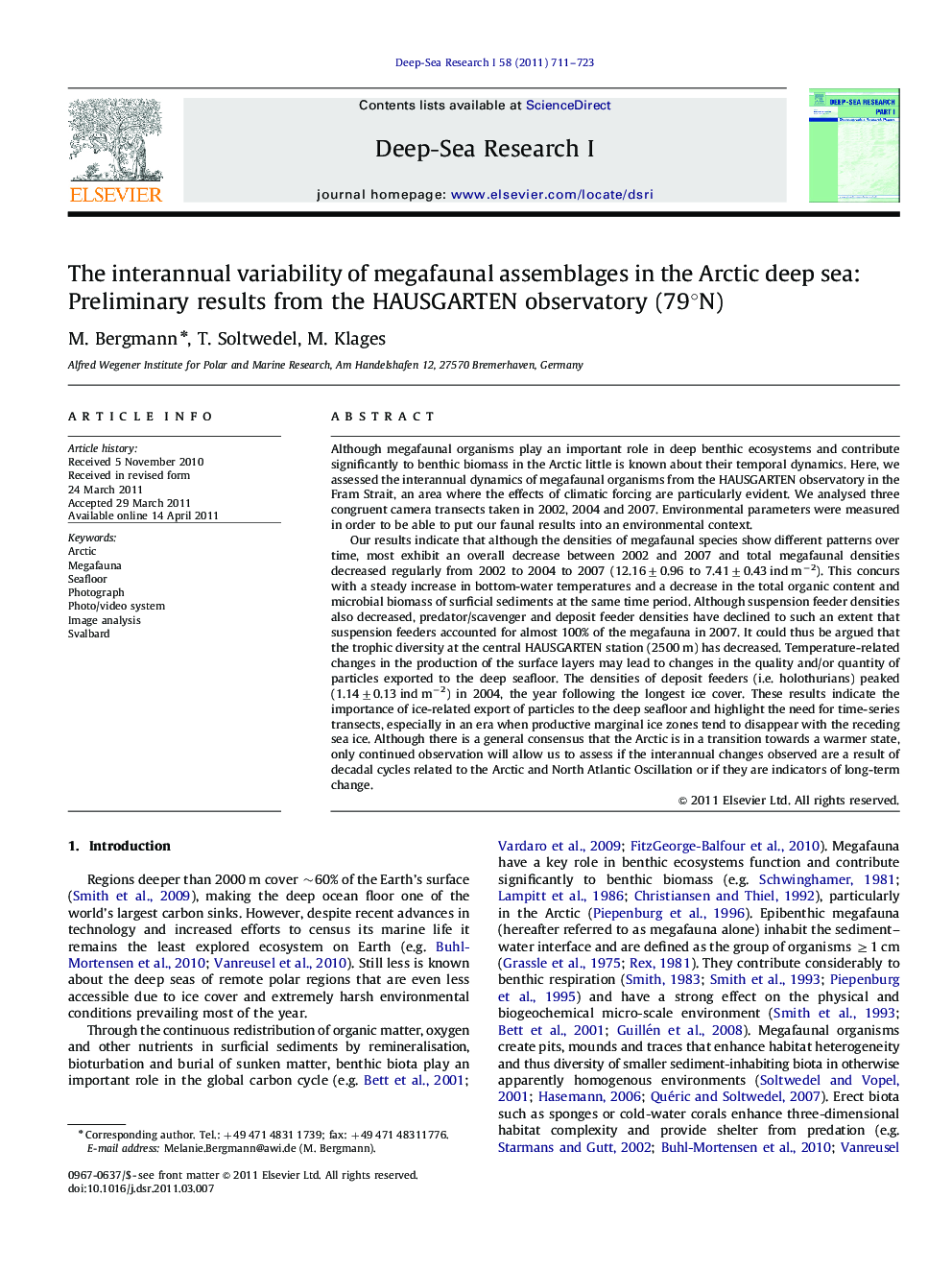| کد مقاله | کد نشریه | سال انتشار | مقاله انگلیسی | نسخه تمام متن |
|---|---|---|---|---|
| 4534846 | 1326064 | 2011 | 13 صفحه PDF | دانلود رایگان |

Although megafaunal organisms play an important role in deep benthic ecosystems and contribute significantly to benthic biomass in the Arctic little is known about their temporal dynamics. Here, we assessed the interannual dynamics of megafaunal organisms from the HAUSGARTEN observatory in the Fram Strait, an area where the effects of climatic forcing are particularly evident. We analysed three congruent camera transects taken in 2002, 2004 and 2007. Environmental parameters were measured in order to be able to put our faunal results into an environmental context.Our results indicate that although the densities of megafaunal species show different patterns over time, most exhibit an overall decrease between 2002 and 2007 and total megafaunal densities decreased regularly from 2002 to 2004 to 2007 (12.16±0.96 to 7.41±0.43 ind m−2). This concurs with a steady increase in bottom-water temperatures and a decrease in the total organic content and microbial biomass of surficial sediments at the same time period. Although suspension feeder densities also decreased, predator/scavenger and deposit feeder densities have declined to such an extent that suspension feeders accounted for almost 100% of the megafauna in 2007. It could thus be argued that the trophic diversity at the central HAUSGARTEN station (2500 m) has decreased. Temperature-related changes in the production of the surface layers may lead to changes in the quality and/or quantity of particles exported to the deep seafloor. The densities of deposit feeders (i.e. holothurians) peaked (1.14±0.13 ind m−2) in 2004, the year following the longest ice cover. These results indicate the importance of ice-related export of particles to the deep seafloor and highlight the need for time-series transects, especially in an era when productive marginal ice zones tend to disappear with the receding sea ice. Although there is a general consensus that the Arctic is in a transition towards a warmer state, only continued observation will allow us to assess if the interannual changes observed are a result of decadal cycles related to the Arctic and North Atlantic Oscillation or if they are indicators of long-term change.
► We compare megafaunal densities from 3 camera transects taken in 2002, 2004 and 2007 at HAUSGARTEN.
► Total megafaunal densities on the deep Arctic seafloor have decreased between 2002 and 2007.
► This concurs with environmental parameters (e.g. temperature, organic content of sediments).
► The trophic composition of megafauna at HAUSGARTEN appears to have changed.
► Temperature-related changes in primary production may alter vertical export and thus megafauna.
Journal: Deep Sea Research Part I: Oceanographic Research Papers - Volume 58, Issue 6, June 2011, Pages 711–723